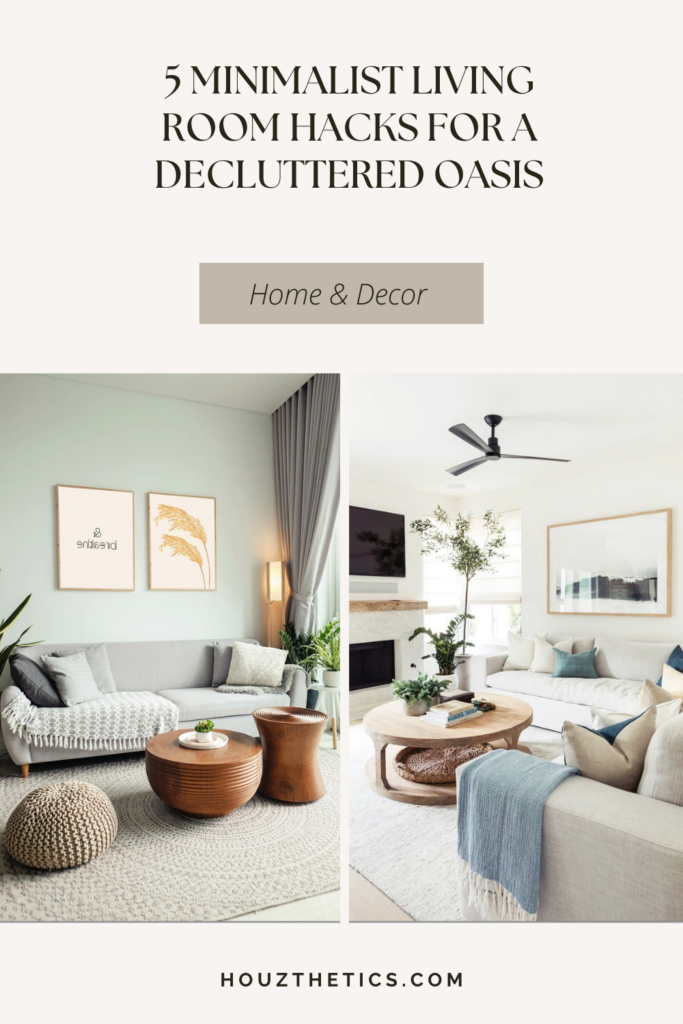
A minimalist living room is a space decorated in a minimalistic style, characterized by clean lines, neutral colors, simple furniture, and a lack of clutter. The goal of a minimalist living room is to create a sense of calm and serenity, and to promote a feeling of spaciousness and openness.
There are many benefits to having a minimalist living room. For one, it can help to reduce stress and anxiety. The absence of clutter and the use of neutral colors can create a calming environment that is conducive to relaxation. Additionally, a minimalist living room can be easier to clean and maintain, as there are fewer items to dust and organize. Finally, a minimalist living room can be more affordable to decorate, as it requires less furniture and dcor.
Minimalist Living Room
A minimalist living room is a space that emphasizes simplicity, functionality, and a clean aesthetic. It typically features neutral colors, simple furniture, and a lack of clutter. Creating a minimalist living room can offer numerous benefits, including reduced stress, easier maintenance, and a more spacious feel.
- Clean Lines: Minimalist living rooms often feature clean lines and simple shapes, creating a sense of order and tranquility.
- Neutral Colors: Neutral colors, such as white, gray, and beige, are commonly used to create a calming and cohesive ambiance.
- Decluttered: Removing unnecessary items and clutter helps to create a sense of spaciousness and reduces visual distractions.
- Functional Furniture: Furniture in minimalist living rooms is often chosen for its functionality and simplicity, with an emphasis on clean lines and comfort.
- Natural Light: Natural light is embraced in minimalist living rooms, as it helps to create a bright and airy atmosphere.
- Plants: Plants can add a touch of nature and vitality to a minimalist living room, while also helping to purify the air.
- Art: Artwork in minimalist living rooms is often simple and abstract, with a focus on neutral colors and clean lines.
- Textiles: Textiles, such as throws and pillows, can add texture and warmth to a minimalist living room, while still maintaining a clean aesthetic.
By incorporating these key aspects into your living room, you can create a space that is not only stylish but also functional, inviting, and conducive to relaxation. A minimalist living room can provide a sanctuary from the stresses of everyday life, allowing you to unwind, recharge, and appreciate the beauty of simplicity.
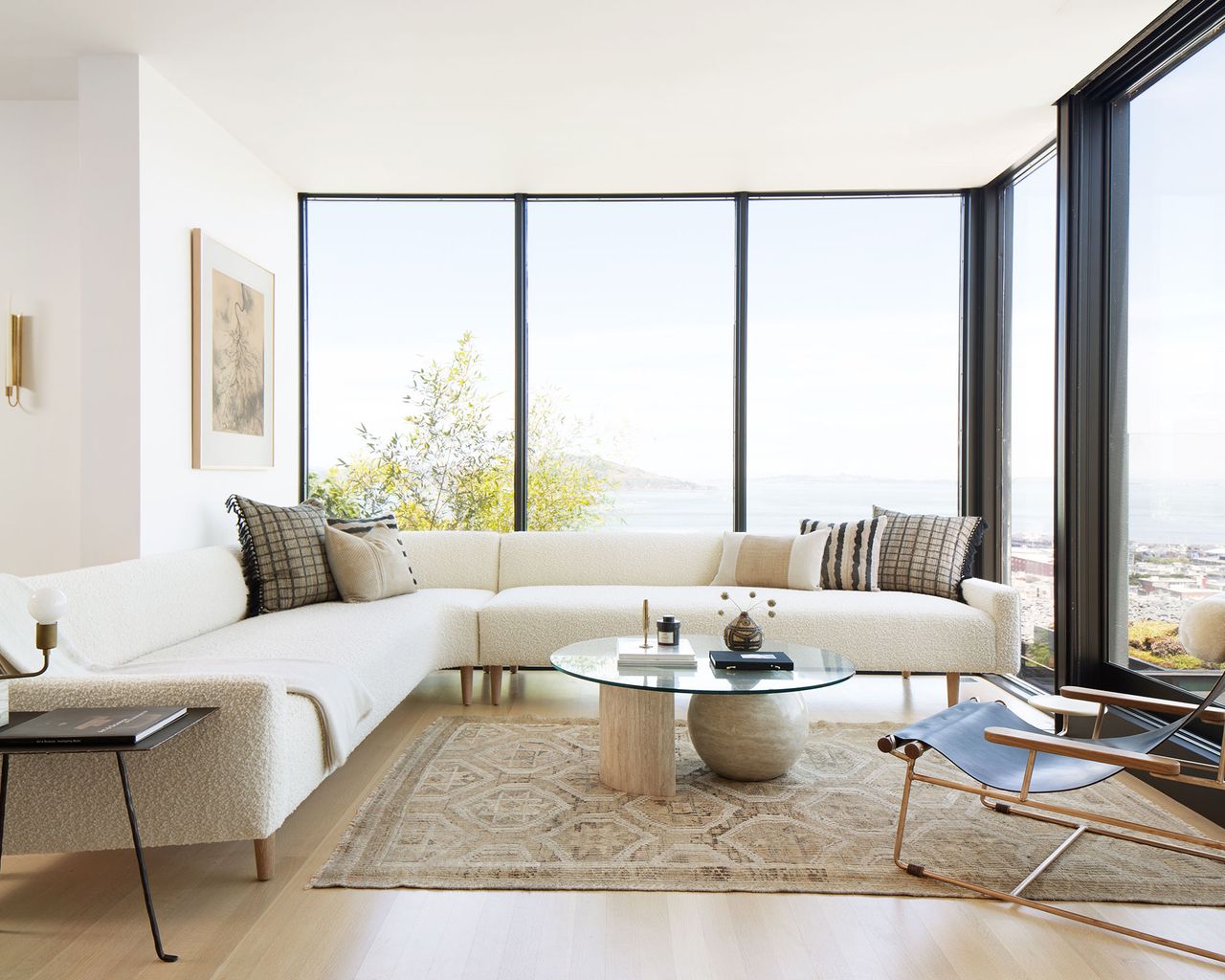
Clean Lines
Clean lines are a defining characteristic of minimalist living rooms. They create a sense of order and tranquility by eliminating visual clutter and unnecessary details. Simple shapes, such as squares, rectangles, and circles, contribute to this streamlined aesthetic, fostering a calming and harmonious environment.
- Facet 1: Visual Clarity
Clean lines enhance visual clarity by reducing distractions and creating a sense of spaciousness. This clarity allows the eye to move effortlessly throughout the room, promoting a feeling of serenity and mental well-being. - Facet 2: Reduced Stress
The absence of visual clutter associated with clean lines can help reduce stress and anxiety. A simplified environment can minimize overstimulation, creating a calming and restorative space. - Facet 3: Improved Focus
By eliminating distractions, clean lines can improve focus and concentration. A minimalist living room with clean lines provides an optimal environment for activities that require attention and clarity of thought. - Facet 4: Timeless Appeal
Clean lines transcend trends and styles, contributing to a timeless aesthetic. Minimalist living rooms with clean lines remain visually appealing and inviting over extended periods, ensuring lasting satisfaction and adaptability to changing tastes.
In conclusion, the emphasis on clean lines in minimalist living rooms is not merely an aesthetic choice but a deliberate design strategy to create a space that promotes order, tranquility, and overall well-being. By embracing clean lines and simple shapes, minimalist living rooms offer a sanctuary from the complexities and distractions of modern life.
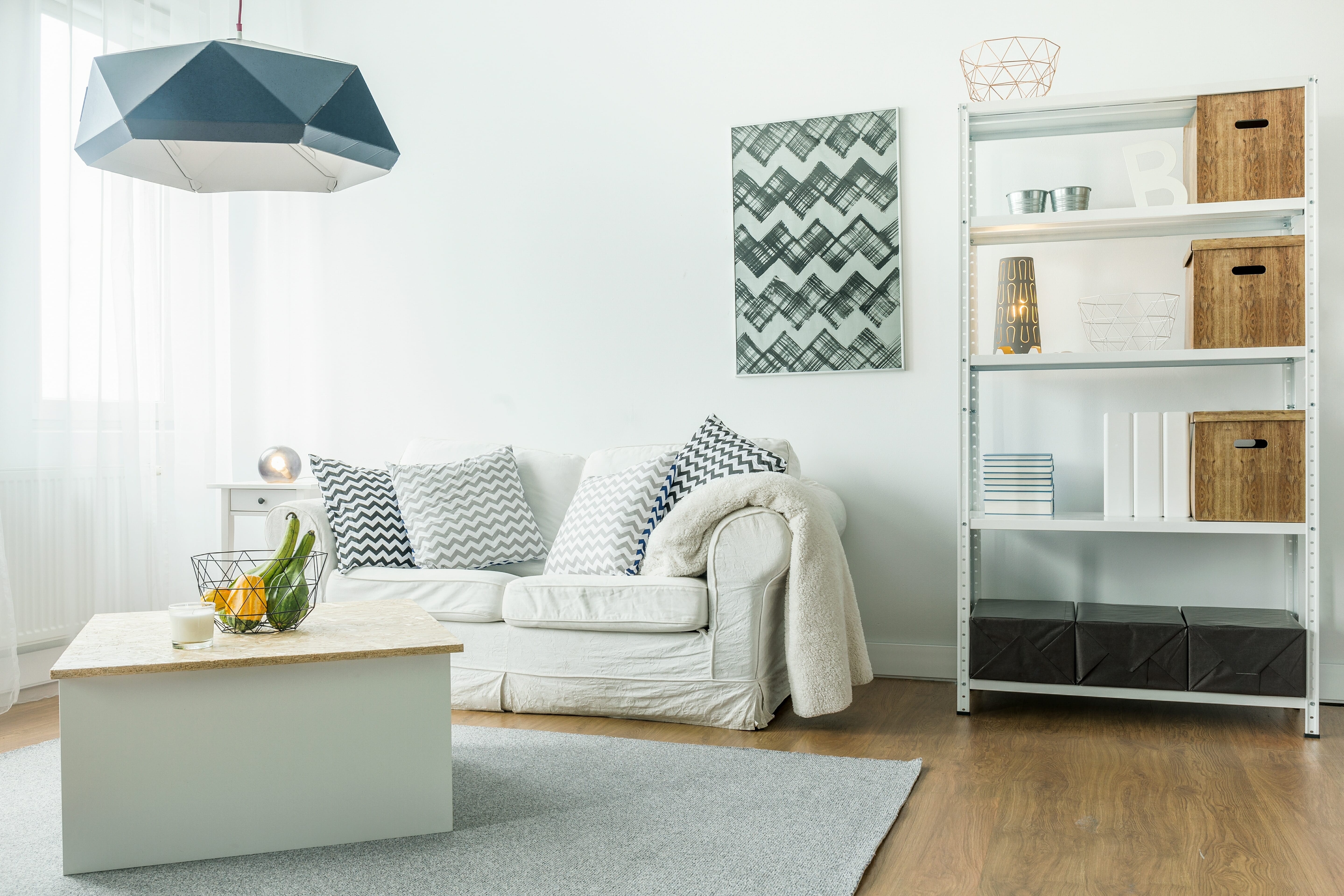
Neutral Colors
In the context of minimalist living rooms, the use of neutral colors plays a pivotal role in achieving the desired aesthetic and atmosphere. Neutral colors, by their very nature, lack strong chromatic intensity and saturation, creating a sense of calmness and serenity. This is particularly important in minimalist living rooms, where the focus is on creating a space that is both visually appealing and conducive to relaxation.
The calming effect of neutral colors is attributed to their ability to reduce visual stimulation and evoke a sense of tranquility. The absence of bold colors and patterns allows the mind to rest and de-stress, creating an environment that is ideal for relaxation and rejuvenation. Additionally, neutral colors have the ability to create a cohesive ambiance by unifying the different elements within the room. By avoiding the use of contrasting colors, neutral colors help to create a sense of harmony and balance, which is essential for achieving a minimalist aesthetic.
The practical significance of understanding the connection between neutral colors and minimalist living rooms lies in the ability to create spaces that are both visually appealing and functional. By incorporating neutral colors into the design, individuals can create living rooms that are not only stylish but also conducive to relaxation and well-being. This is particularly important in today’s fast-paced world, where stress and anxiety are prevalent, and the need for calming and restorative spaces is greater than ever.
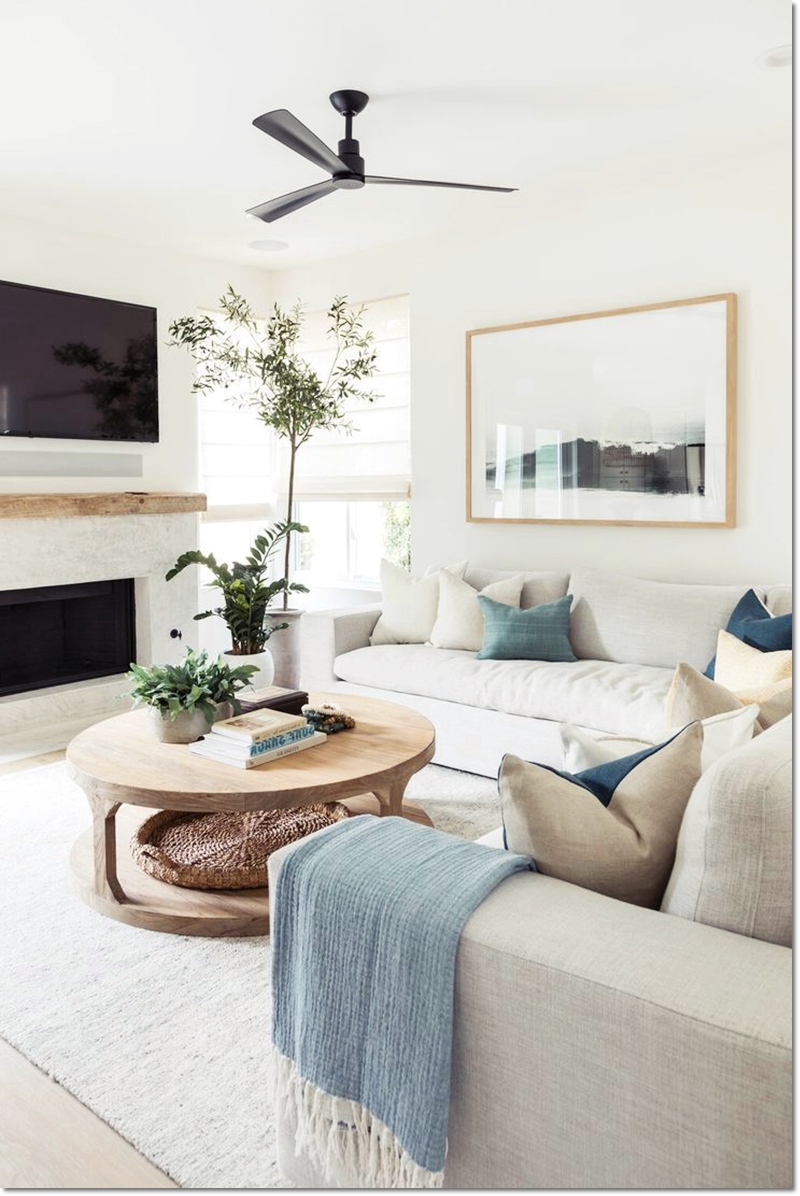
Decluttered
In the context of minimalist living rooms, decluttering plays a crucial role in achieving the desired aesthetic and atmosphere. Removing unnecessary items and clutter helps to create a sense of spaciousness and reduces visual distractions, which are essential elements of a minimalist living room.
The connection between decluttering and minimalist living rooms is rooted in the principles of simplicity and functionality that define minimalism. By eliminating non-essential items and clutter, individuals can create a more spacious and cohesive living environment. This is particularly important in smaller spaces, where clutter can quickly overwhelm and create a sense of chaos. Decluttering not only frees up physical space but also reduces visual clutter, allowing the eye to move effortlessly throughout the room and appreciate the clean lines and simple forms that are characteristic of minimalist design.
Furthermore, decluttering has a positive impact on mental well-being. A cluttered environment can be mentally and emotionally draining, as it overstimulates the senses and creates a sense of disorganization and chaos. By decluttering and removing unnecessary items, individuals can create a more calming and restorative space that promotes relaxation and reduces stress. This is especially important in living rooms, which are often used for relaxation and entertainment.
The practical significance of understanding the connection between decluttering and minimalist living rooms lies in the ability to create spaces that are both visually appealing and functional. By incorporating decluttering into their minimalist living room design, individuals can create homes that are not only stylish but also conducive to relaxation, well-being, and productivity.
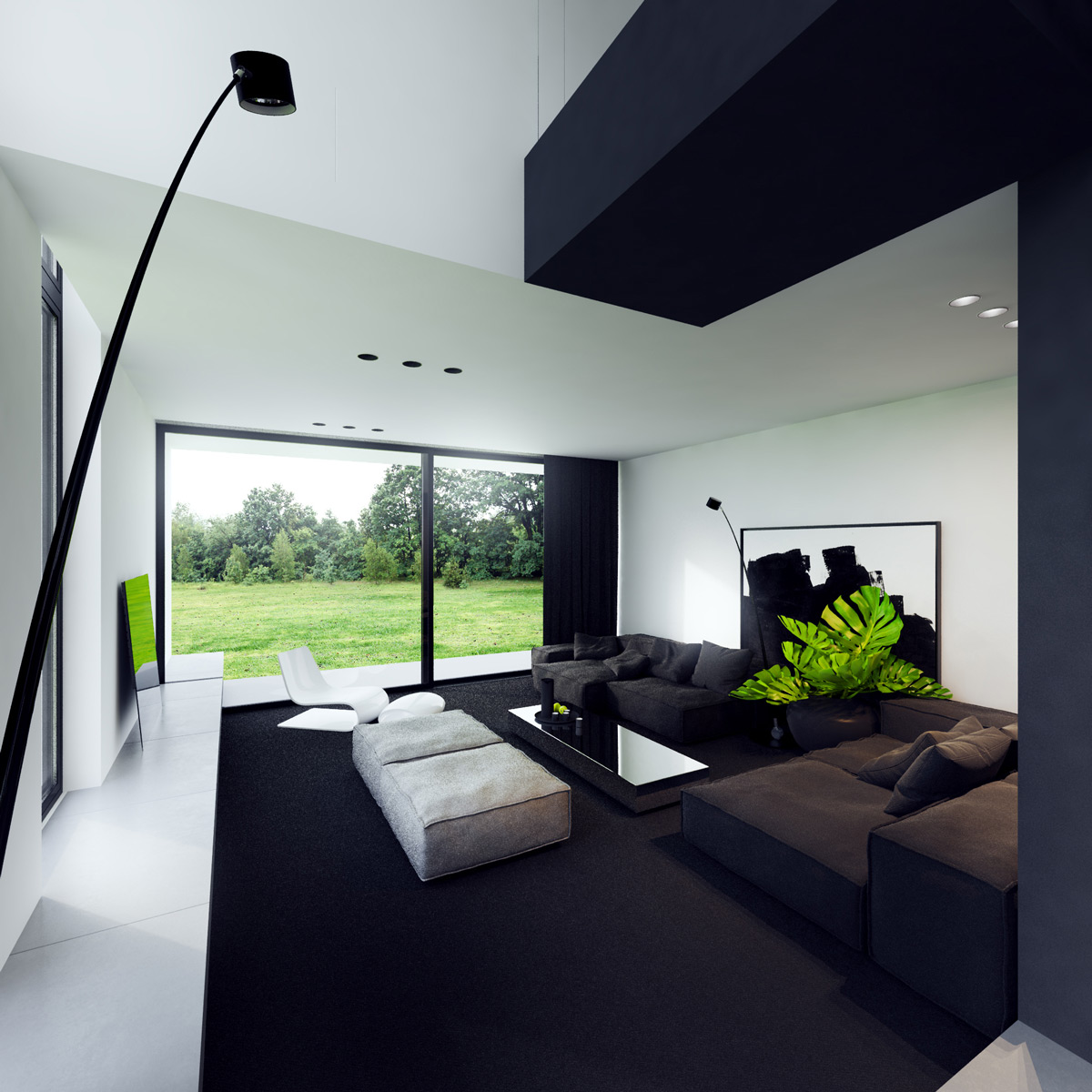
Functional Furniture
In the context of minimalist living rooms, functional furniture plays a crucial role in achieving the desired aesthetic and atmosphere. Furniture in minimalist living rooms is chosen primarily for its functionality and simplicity, with an emphasis on clean lines and comfort. This approach to furniture selection aligns perfectly with the core principles of minimalism, which prioritize simplicity, functionality, and a clean aesthetic.
- Facet 1: Space Optimization
Functional furniture in minimalist living rooms is designed to optimize space and maximize functionality. It often incorporates features such as hidden storage, multiple uses, and modularity, allowing individuals to make the most of their living space without sacrificing style or comfort.
- Facet 2: Visual Harmony
The clean lines and simple forms of functional furniture contribute to the visual harmony of minimalist living rooms. By avoiding ornate details and excessive embellishments, functional furniture creates a cohesive and calming environment that is visually appealing and conducive to relaxation.
- Facet 3: Comfort and Ergonomics
Despite the emphasis on functionality and simplicity, functional furniture in minimalist living rooms does not compromise on comfort and ergonomics. It is designed to provide adequate support and comfort while maintaining a clean and minimalist aesthetic.
- Facet 4: Durability and Sustainability
Functional furniture in minimalist living rooms is often made from durable and sustainable materials, ensuring longevity and minimizing waste. This approach aligns with the minimalist philosophy of reducing consumption and promoting sustainability.
In conclusion, the connection between functional furniture and minimalist living rooms is rooted in the shared principles of simplicity, functionality, and visual harmony. By incorporating functional furniture into their living spaces, individuals can create environments that are not only stylish and visually appealing but also comfortable, practical, and conducive to well-being.
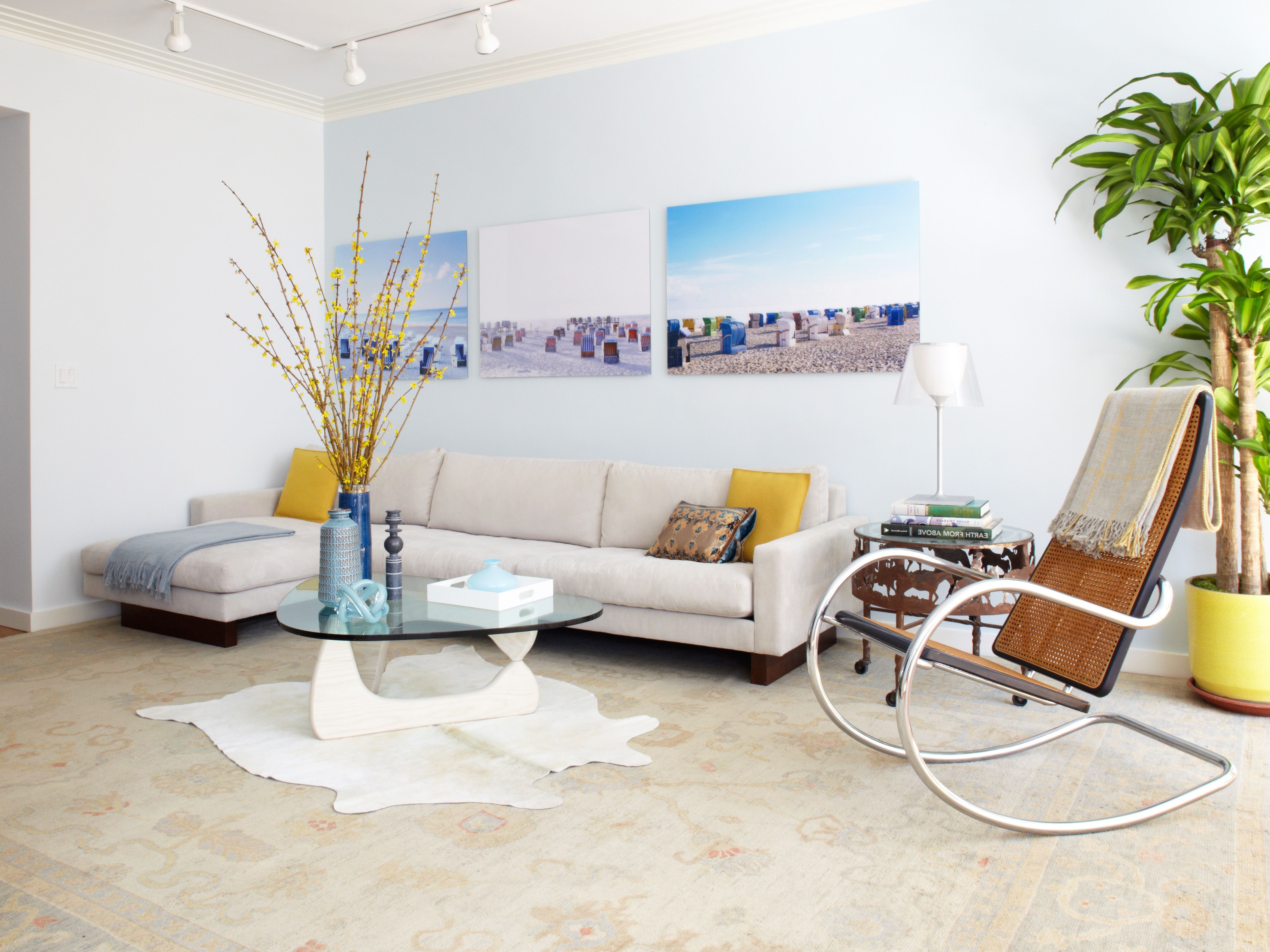
Natural Light
In the context of minimalist living rooms, natural light plays a crucial role in achieving the desired aesthetic and atmosphere. Embracing natural light helps to create a bright, airy, and inviting space that is characteristic of minimalist design.
- Facet 1: Enhanced Spaciousness
Natural light has the ability to make a room feel more spacious and expansive. By allowing ample natural light to enter the room, individuals can create the illusion of a larger space, even in smaller living rooms.
- Facet 2: Improved Mood
Natural light has been shown to have positive effects on mood and well-being. Exposure to sunlight can boost serotonin levels, which is associated with feelings of happiness and contentment.
- Facet 3: Reduced Energy Consumption
By relying on natural light during the day, individuals can reduce their energy consumption and minimize their environmental impact. This aligns with the minimalist philosophy of sustainability and responsible living.
- Facet 4: Architectural Harmony
The incorporation of natural light in minimalist living rooms often involves large windows and open spaces. This approach creates a harmonious relationship between the interior and exterior, blurring the boundaries and bringing the outside in.
In conclusion, the connection between natural light and minimalist living rooms is rooted in the ability of natural light to enhance spaciousness, improve mood, reduce energy consumption, and create architectural harmony. By embracing natural light, individuals can create minimalist living rooms that are not only visually appealing but also conducive to well-being and sustainable living.

Plants
In the context of minimalist living rooms, plants play a multifaceted role in enhancing the aesthetic, purifying the air, and creating a more inviting and harmonious space. Their presence adds a touch of nature and vitality, while their ability to remove toxins and improve air quality contributes to overall well-being.
- Facet 1: Biophilic Connection
Humans have an innate connection with nature, and incorporating plants into living spaces can satisfy this biophilic need. Plants bring the outdoors in, fostering a sense of tranquility and well-being. In minimalist living rooms, where clean lines and neutral colors dominate, plants provide a refreshing contrast and a touch of organic beauty.
- Facet 2: Air Purification
Certain plants have the ability to remove harmful toxins and pollutants from the air. By absorbing these toxins through their leaves and roots, plants help to create a healthier and more breathable environment. In minimalist living rooms, where air quality is often a concern due to limited ventilation, plants can serve as natural air purifiers.
- Facet 3: Visual Interest
Plants add visual interest and depth to minimalist living rooms without compromising the clean aesthetic. Their varying shapes, sizes, and textures create a dynamic and visually appealing space. Plants can be used as focal points, arranged in clusters, or placed on shelves and windowsills to add height and dimension to the room.
- Facet 4: Improved Acoustics
Plants can also contribute to improved acoustics in minimalist living rooms. Their soft, porous surfaces help to absorb sound and reduce reverberation. This can create a more comfortable and intimate atmosphere, making it easier to relax, converse, and enjoy music.
In conclusion, the presence of plants in minimalist living rooms goes beyond mere decoration. They serve multiple functions, from enhancing the aesthetic and purifying the air to creating a more inviting and harmonious space. By incorporating plants into their living rooms, individuals can create an environment that is not only visually appealing but also conducive to well-being and relaxation.
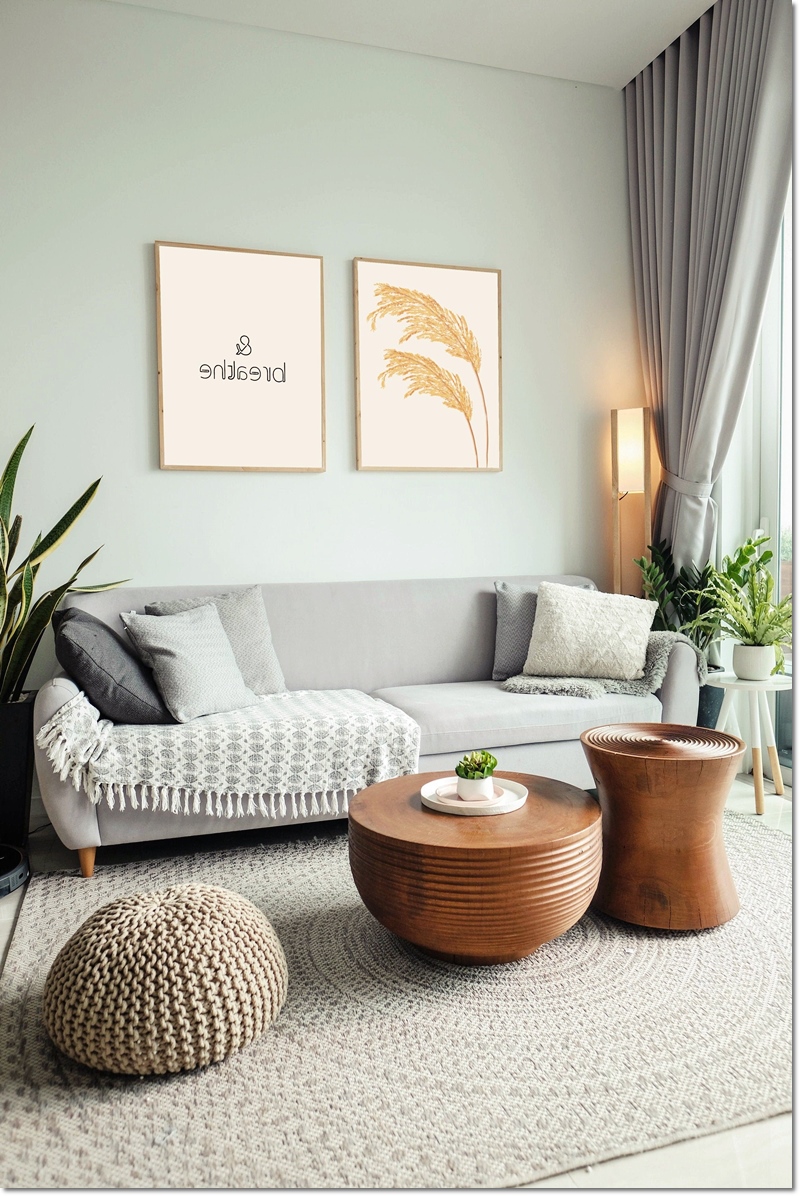
Art
In the context of minimalist living rooms, artwork plays a significant role in enhancing the overall aesthetic and creating a harmonious and visually appealing space. The choice of artwork in minimalist living rooms is often guided by the principles of simplicity, abstraction, and a focus on neutral colors and clean lines, which are characteristic of minimalist design.
The connection between art and minimalist living rooms stems from the shared emphasis on creating a serene and uncluttered environment. Simple and abstract artwork, with its minimal use of color and ornamentation, complements the clean lines and neutral tones of minimalist living rooms, creating a cohesive and visually pleasing space. This approach to art selection aligns with the minimalist philosophy of reducing visual clutter and emphasizing essential elements.
Furthermore, the use of neutral colors and clean lines in artwork helps to maintain the sense of spaciousness and tranquility that is characteristic of minimalist living rooms. By avoiding bold colors and intricate patterns, minimalist artwork contributes to the overall feeling of calm and serenity, creating a space that is conducive to relaxation and contemplation.
In addition to its aesthetic value, artwork in minimalist living rooms can also serve a functional purpose. Simple and abstract artwork can be used to create focal points, add depth and dimension to the room, and complement the existing furniture and decor. By carefully selecting artwork that resonates with the minimalist aesthetic, individuals can create a living space that is both visually appealing and functional.
In conclusion, the connection between art and minimalist living rooms is rooted in the shared principles of simplicity, abstraction, and a focus on neutral colors and clean lines. By incorporating minimalist artwork into their living spaces, individuals can create environments that are not only visually pleasing but also conducive to relaxation, contemplation, and overall well-being.
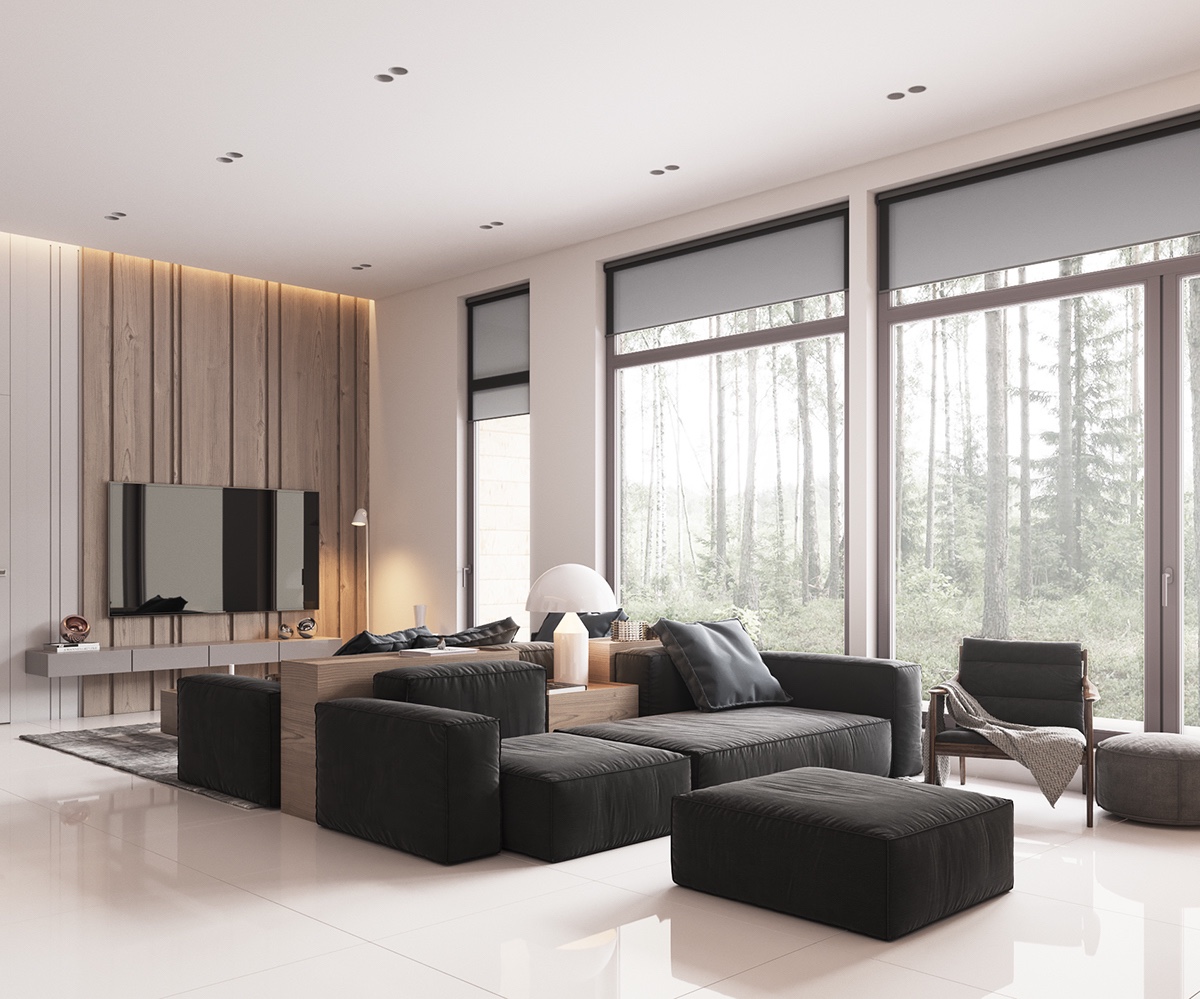
Textiles
In the context of minimalist living rooms, textiles play a crucial role in enhancing the overall aesthetic and creating a warm and inviting space. While minimalism emphasizes simplicity and clean lines, textiles allow for the introduction of texture, pattern, and color in a subtle and sophisticated way, complementing the minimalist design principles.
- Facet 1: Adding Warmth and Comfort
Textiles, such as soft throws and plush pillows, add a layer of warmth and comfort to minimalist living rooms. Their tactile qualities invite touch and create a cozy and inviting atmosphere, counterbalancing the potential coldness or sterility associated with minimalist interiors.
- Facet 2: Enhancing Visual Interest
Textiles introduce visual interest and depth to minimalist living rooms. Patterns, textures, and colors can be carefully chosen to create subtle variations and focal points within the space. This helps to break up the monotony of neutral color schemes and add a touch of personality.
- Facet 3: Defining Spaces
Textiles can be used to define different areas within a minimalist living room. Rugs, for example, can visually separate seating areas from dining areas or create cozy nooks for reading or relaxation.
- Facet 4: Maintaining a Clean Aesthetic
Despite their ability to add texture and warmth, textiles can still maintain the clean aesthetic of a minimalist living room. By choosing textiles in neutral colors and simple patterns, or by using them sparingly, individuals can avoid cluttering the space and preserve the sense of simplicity and order.
In conclusion, the use of textiles in minimalist living rooms is a thoughtful and effective way to enhance the overall aesthetic, introduce warmth and comfort, and create a more inviting and personalized space. By carefully selecting textiles that complement the minimalist design principles, individuals can create living rooms that are both stylish and functional.

Frequently Asked Questions About Minimalist Living Rooms
This section addresses common questions and misconceptions about minimalist living rooms, providing informative answers to guide individuals in creating stylish and functional spaces.
Question 1: What are the key characteristics of a minimalist living room?
Answer: Minimalist living rooms emphasize simplicity, functionality, and clean lines. They typically feature neutral colors, simple furniture, a lack of clutter, and an abundance of natural light.
Question 2: How can I create a minimalist living room on a budget?
Answer: Creating a minimalist living room on a budget involves decluttering, choosing multifunctional furniture, and opting for affordable materials. DIY projects and upcycling can also help reduce costs while maintaining a stylish aesthetic.
Question 3: How do I avoid making my minimalist living room look sterile or cold?
Answer: To prevent a minimalist living room from appearing sterile or cold, incorporate warm and inviting elements such as textiles, plants, and artwork. Choose soft furnishings, natural materials, and add personal touches to create a cozy and lived-in feel.
Question 4: How can I incorporate storage solutions into a minimalist living room?
Answer: Storage solutions in minimalist living rooms should be both functional and aesthetically pleasing. Consider hidden storage within furniture, floating shelves, and baskets that double as decorative elements. Utilize vertical space with stackable bins and wall-mounted organizers.
Question 5: How do I maintain a minimalist living room over time?
Answer: Maintaining a minimalist living room requires ongoing effort. Regularly declutter and remove unnecessary items. Clean and organize frequently to prevent clutter from accumulating. Stick to a neutral color palette and avoid excessive ornamentation to preserve the minimalist aesthetic.
Question 6: What are the benefits of having a minimalist living room?
Answer: Minimalist living rooms offer numerous benefits, including reduced stress and anxiety, easier maintenance, a sense of spaciousness, improved focus, and a more harmonious environment. They promote tranquility, well-being, and a greater appreciation for simplicity and functionality.
In conclusion, creating a minimalist living room involves embracing simplicity, functionality, and a clean aesthetic. By carefully considering furniture choices, incorporating natural elements, and implementing effective storage solutions, individuals can create stylish and inviting living spaces that promote well-being and enhance daily life.
